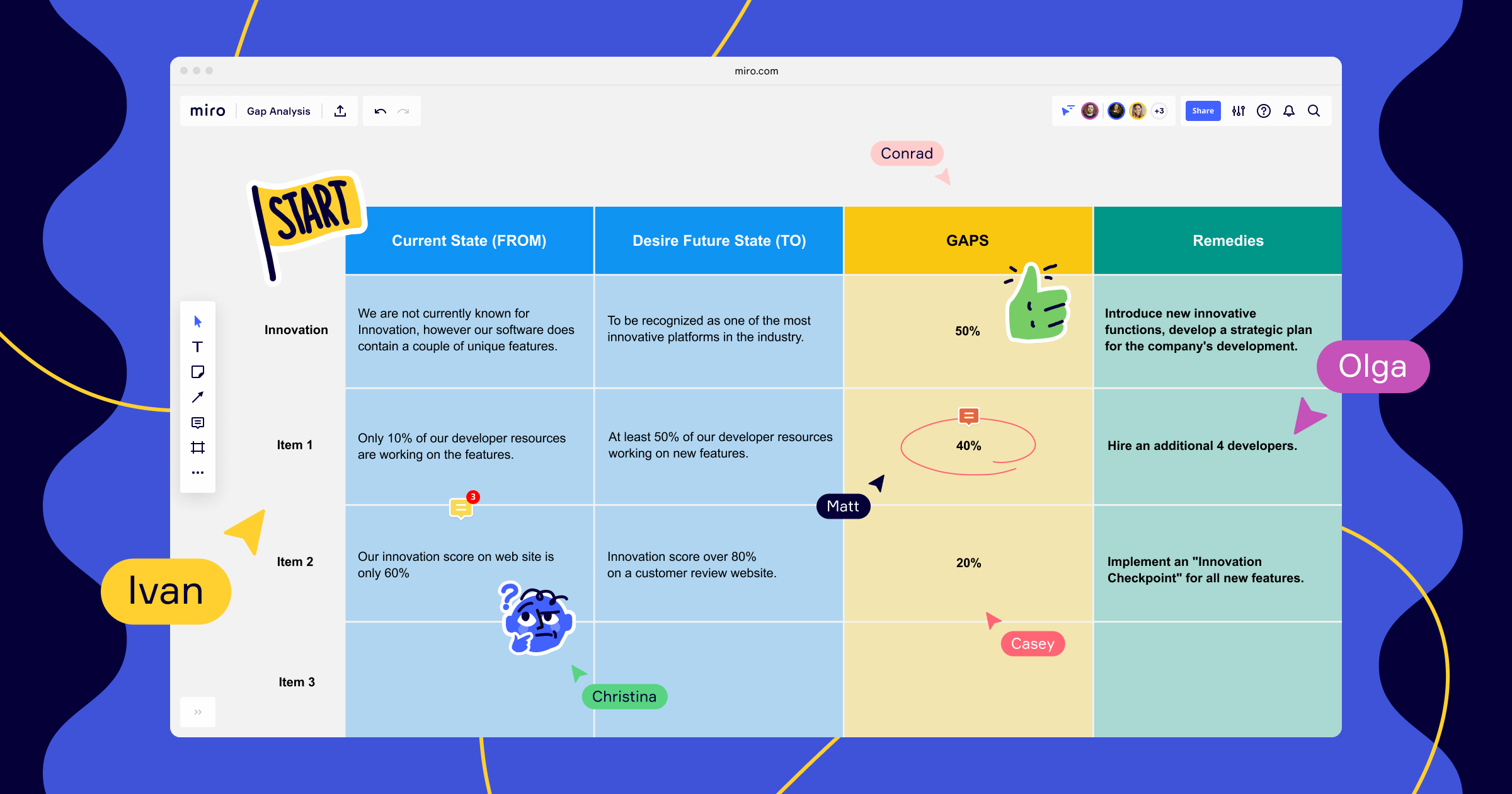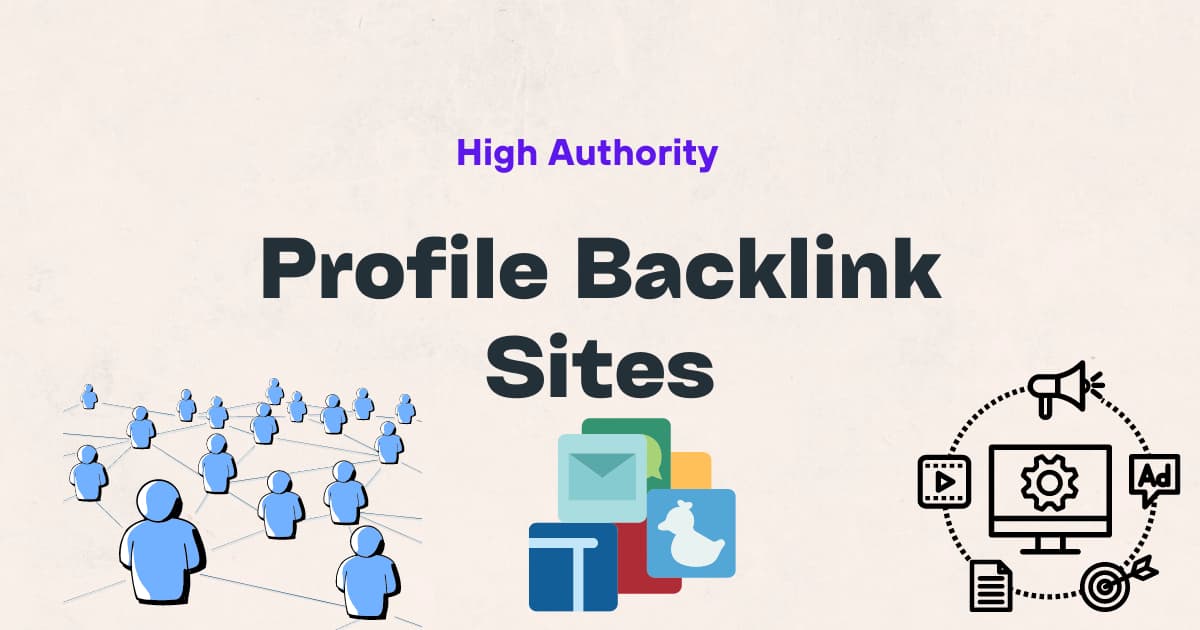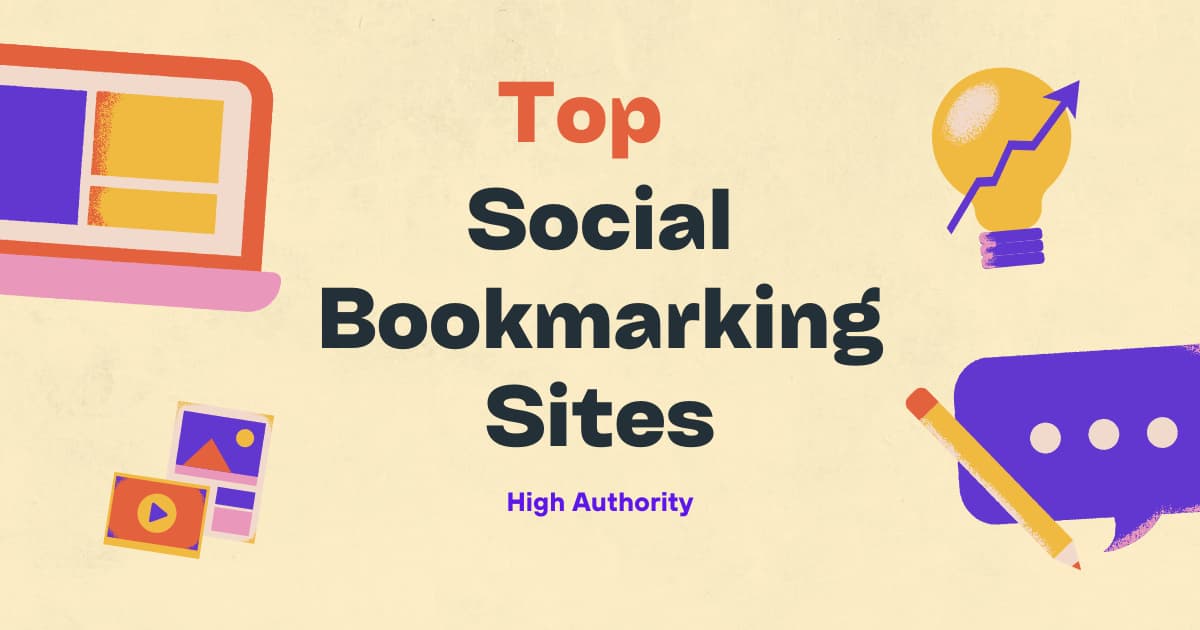To capture competitor traffic using content gap analysis, identify keyword opportunities and create targeted content. Analyze competitors’ top-performing keywords and prioritize content creation based on gaps in your own strategy.
Content gap analysis is a crucial part of any successful SEO strategy, helping businesses understand what keywords their competitors are ranking for and where they are missing opportunities. By leveraging this data, businesses can optimize their content to target specific keywords that their competitors may have overlooked.
This proactive approach allows companies to attract more organic traffic and increase their visibility in search engine results. We will delve into the importance of using content gap analysis to enhance your SEO efforts and drive more traffic to your website.

Credit: miro.com
Understanding Content Gap Analysis
Content gap analysis is a strategic method to identify areas in your content strategy that need improvement. It can be used to capture competitor traffic by recognizing where your competitors are ranking higher than you, allowing you to create targeted content to fill those gaps and attract more traffic to your website.
What Is Content Gap Analysis?
Content gap analysis is a vital part of any successful SEO strategy. It involves identifying gaps or opportunities in the content of your website compared to your competitors. By conducting a thorough analysis, you can understand what kind of content is missing from your site that is driving traffic to your competitors’ websites.
Why Is Content Gap Analysis Important?
Content gap analysis is important because it allows you to uncover valuable insights about your competitors’ content strategies. By identifying what your competitors are doing right, you can close the gap and drive more traffic to your website.
Benefits Of Using Content Gap Analysis
1. Enhanced Keyword Research
Content gap analysis helps you discover valuable keywords that your competitors are successfully ranking for. By identifying these keywords, you can optimize your content to target the same audience effectively.
2. Improved Content Strategy
With content gap analysis, you gain valuable insights into the topics and formats that are resonating with your target audience. Armed with this information, you can create more engaging and relevant content that drives traffic, improves user experience, and boosts conversions.
3. Increased Organic Traffic
Identifying the gaps in your content allows you to create and optimize pages that directly address your audience’s search intent. By filling these content gaps, you can increase your organic search visibility, attract more qualified traffic, and ultimately generate more leads or sales.
4. Competitive Advantage
Uncovering gaps in your competitors’ content provides you with a competitive advantage. By understanding what your competitors are missing or failing to address, you can position your website as the go-to resource in your industry. This can help you steal market share and establish your brand as an industry leader.
5. Improved User Experience
By using content gap analysis, you can identify content that is highly converting and resonates well with the audience. By incorporating these elements into your own content strategy, you can enhance the user experience on your website and increase user engagement, leading to higher conversions and customer satisfaction.
6. Targeted Advertising
By understanding the content gaps of your competitors, you can identify opportunities to create highly targeted advertising campaigns. This enables you to reach a specific audience that your competitors may be missing, increasing your chances of capturing their traffic and converting them into customers.
Content gap analysis is a powerful tool that can help you uncover valuable insights, improve your content strategy, and ultimately capture competitor traffic. Whether you are just starting out or looking to gain a competitive edge, incorporating content gap analysis into your SEO strategy is a must.

Credit: contentmarketinginstitute.com
Key Steps In Conducting Content Gap Analysis
To capture competitor traffic through content gap analysis, you should start by identifying your top-performing content and comparing it with that of your competitors. Then, conduct keyword research to uncover gaps and create new content to fill these voids, optimizing it for search engines.
Identifying Your Competitors
Begin by outlining your main competitors in the industry or niche you are targeting.
Compile a list of competitors who are actively vying for the same target audience.
Analyzing Competitor Content
Review the content posted by your competitors on their websites and social media platforms.
Identify the type of content they are producing and determine its performance in terms of engagement.
Identifying Gaps And Opportunities
Assess the topics and keywords your competitors are targeting and analyze the gaps in their content strategies.
Look for areas where your competitors are lacking or missing out on valuable traffic opportunities.
Creating A Content Strategy
Develop a comprehensive content strategy based on the insights gained from your content gap analysis.
Ensure that each piece of content you produce addresses the identified gaps and targets the missed opportunities.
Tools And Techniques For Content Gap Analysis
When tapping into the potential of content gap analysis, having the right tools and techniques in place is crucial to grasp a competitive edge in your industry. These tools and techniques provide invaluable insights into your competitors’ strategies, allowing you to identify gaps and opportunities to capture more traffic. Let’s delve into the essential tools and techniques for effective content gap analysis.
Keyword Research Tools
Keyword research tools are fundamental for identifying high-value keywords that your competitors are ranking for. Utilize tools such as SEMrush, Ahrefs, and Moz’s Keyword Explorer to uncover new keyword opportunities and analyze your competitors’ keyword strategies.
Competitor Analysis Tools
Competitor analysis tools like SimilarWeb and SpyFu enable you to gain insights into your competitors’ content performance, traffic sources, and audience demographics. These tools provide valuable data to identify gaps in your content and capitalize on untapped opportunities.
Content Audit Techniques
Content audit techniques involve a comprehensive analysis of your existing content to identify gaps and areas for improvement. Tools such as Screaming Frog and Google Analytics help in evaluating the performance of your content, identifying underperforming pages, and uncovering content gaps that need to be addressed.
Social Media Listening Tools
Social media listening tools such as Brandwatch and Mention enable you to monitor conversations about your competitors, industry trends, and customer preferences. By understanding the topics and discussions that resonate with your target audience, you can identify content gaps and create engaging, relevant content that captures competitor traffic.

Credit: blog.hubspot.com
Creating A Successful Content Gap Analysis Strategy
When it comes to capturing competitor traffic, one powerful tool to have in your arsenal is a content gap analysis strategy. By identifying the gaps in your competitors’ content offerings, you can develop a winning plan to attract their audiences and boost your own visibility. In this article, we will discuss four essential steps to creating a successful content gap analysis strategy that will give you an edge over your competitors.
Setting Goals And Objectives
Setting clear goals and objectives is the starting point for any successful content gap analysis strategy. Begin by defining what you want to achieve with your analysis. Are you aiming to increase organic traffic, gain more leads, or boost conversion rates? Clearly indicating your objectives will help you focus your efforts and measure your success effectively.
Defining Target Audience
To create content that resonates with your audience, it’s vital to define who they are. Conduct in-depth research to gain insights into their demographics, interests, pain points, and online behavior. This will allow you to tailor your content specifically to their needs, making it more attractive than your competitors’ offerings.
Choosing The Right Metrics
Metrics play an important role in evaluating the success of your content gap analysis strategy. However, it’s crucial to select the right metrics that align with your goals and objectives. For example, if your goal is to increase organic traffic, you might focus on metrics such as organic search rankings, click-through rates, and bounce rates. By analyzing these metrics, you can track your progress and make data-driven decisions.
Developing An Action Plan
Once you have set goals, defined your target audience, and chosen your metrics, it’s time to develop a detailed action plan. This plan should include steps to close the identified content gaps, such as creating new content, optimizing existing content, or exploring new distribution channels. Break down your action plan into smaller tasks with clear deadlines, ensuring accountability and efficient execution.
In conclusion, a successful content gap analysis strategy is crucial for capturing competitor traffic and boosting your online presence. By setting goals and objectives, defining your target audience, choosing the right metrics, and developing an action plan, you can effectively bridge the gaps in your content offerings and attract the audiences who matter most to your business.
Implementing Content Gap Analysis Findings
Implementing Content Gap Analysis Findings can dramatically enhance your content strategy. By identifying opportunities that exist in undervalued areas, you can capture competitor traffic effectively.
Creating New Content
Create fresh, unique content based on the keywords and topics lacking in your current arsenal.
Optimizing Existing Content
Revise and update existing articles to align with the keywords and themes highlighted in your analysis.
Promoting Content
Share your new and optimized content across relevant platforms to maximize visibility.
Tracking And Measuring Results
Monitor the performance of your content using analytics tools to evaluate its effectiveness.
Case Studies: Real-world Examples
In this section, we will explore three real-world case studies that demonstrate the power of content gap analysis in capturing competitor traffic. These case studies provide valuable insights into how companies have successfully leveraged this strategy to increase their organic traffic and gain market share. Let’s take a closer look at each case study:
Case Study 1: Company X Increasing Organic Traffic
Company X, a leading player in the industry, utilized content gap analysis to identify areas where their competitors were outperforming them. By conducting a thorough analysis of their competitors’ content, they uncovered key topics and keywords that were driving significant traffic.
Armed with this information, Company X created a comprehensive content strategy to fill these gaps and capture valuable traffic. They developed high-quality, informative articles targeting the identified keywords, optimizing them for search engines and user experience.
Their efforts paid off, resulting in a substantial increase in organic traffic. By addressing content gaps identified through analysis, Company X positioned themselves as a top resource in their industry, attracting a wider audience and boosting their online visibility.
Case Study 2: How Competitor Y Gained Market Share
Competitor Y was struggling to gain market share in a highly competitive landscape. However, by leveraging content gap analysis, they were able to turn the tables in their favor.
Through a comprehensive analysis of their top competitors’ content, Competitor Y identified untapped topics and keywords that presented opportunities for growth. They strategically created engaging and highly relevant content to address these gaps and provide value to their target audience.
As a result, Competitor Y saw a significant increase in organic traffic, capturing the attention of their competitors’ audience and winning over new customers. By understanding and filling the content gaps in their industry, Competitor Y established themselves as a formidable player in the market.
Case Study 3: Successful Content Gap Analysis Campaigns
Various successful campaigns have used content gap analysis to drive exceptional results. Notably, Company Z deployed this strategy to identify gaps in their content strategy and effectively capture competitor traffic.
By analyzing their competitors’ content, Company Z pinpointed specific topics and keywords that were missing from their website. They created high-quality content that not only filled these gaps but also surpassed the competition in terms of value and relevance.
As a result, Company Z experienced a surge in organic traffic, with their website ranking higher in search engine results and attracting a larger audience. The successful implementation of content gap analysis propelled them ahead of their competitors, establishing their authority in the industry.
Frequently Asked Questions For How To Use Content Gap Analysis To Capture Competitor Traffic
How To Do Competitor Gap Analysis?
To do a competitor gap analysis, identify strengths and weaknesses, compare products/services, pricing, marketing strategies, and customer feedback. Analyze data to find opportunities for improvement in your own business.
How Do You Run A Content Gap Analysis?
To conduct a content gap analysis, follow these steps: 1. Identify target keywords with search volume and relevance. 2. Analyze competitor websites to determine content they have but you don’t. 3. Use SEO tools to gather data on competitor rankings and content gaps.
4. Assess your existing content to identify areas for improvement or expansion. 5. Develop a plan to fill content gaps, creating high-quality and relevant content tailored to target keywords.
What Are The Best Tools For Content Gap Analysis?
The best tools for content gap analysis include SEMrush, Ahrefs, and Buzzsumo. These tools help identify gaps in your content strategy by analyzing competitor’s keywords, backlinks, and social shares. It provides valuable insights for improving your content and outranking your competition.
How Do You Use Gap Analysis?
Gap analysis is used to identify discrepancies between current and desired performance. It involves evaluating strengths and weaknesses to develop action plans for improvement. Conducting a thorough assessment helps in setting measurable objectives and strategies for achieving them. Regular reviews are essential for refining the process and ensuring continued progress.
Conclusion
Analyzing content gaps is crucial for outperforming competitors. Implement tools like SEMrush to identify opportunities. Create high-quality content addressing those gaps. Stay updated on trends and adjust strategies accordingly. By consistently refining your content, you can effectively capture competitor traffic and boost your online presence.




